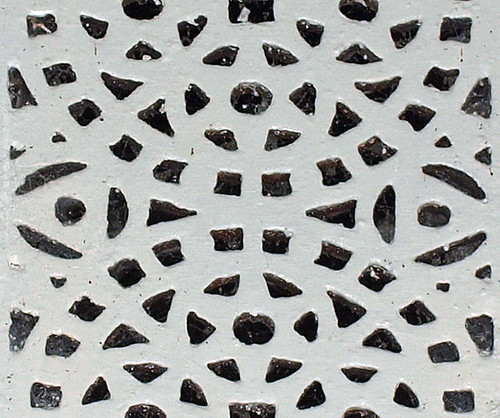St Mary Magdalene has been taken under the wing of The Friends of Friendless Churches. The present church dates from the 14th and 15th centuries. It is likely that there was an earlier church on the site as the list of rectors begins in 1215. The village was abandoned during the 15th and 16th centuries. Repairs were carried out to the church in the 18th century and the church was declared redundant in 1975. It was taken into the care of the charity, the Friends of Friendless Churches, in 1982.
St Mary Magdalene is constructed in flint and clunch rubble, with some brick. The clunch came from a nearby quarry at Ashwell. The brick was inserted to replace worn-away clunch. It is a small church with a nave and chancel without any division between them. It measures 51 feet (15.5m) long by 14 feet 6 inches (4.4m) wide. At the west end is a tower in two stages with corner buttresses in the lower part of the bottom stage. There are two-light windows dating from the 14th century in both stages and a plain parapet at the summit. On the east face of the tower is a lead plaque inscribed "Katherine Morris 1736", an unusual reference to a female plumber responsible for the lead covering on the roof. On the south of the church is a porch dating from the 15th century. The nave, chancel and porch have battlemented parapets. The windows in the nave and chancel are Perpendicular in style. Inside the porch is a crocketed and canopied stoup, which Nikolaus Pevsner states is unique. The font dates from the 15th century; it is octagonal with carved tracery, shields, and foliage, in "unusually rich" Perpendicular style. The benches also date from the 15th century, as does the circular east window. The memorials include a kneeling figure of Rector William Makesey who died in 1424. There is also a plaque to the memory of Thomas Inskip, 1st Viscount Caldecote.I loved this church and in many ways, although they couldn't be more different, it reminded me of Tilty - think it might have been the quality of light and the seamless nave and chancel.
There's a tragically ruined, I think Flemish but maybe old English, window which appears to be beyond redemption, it looks like damp problems, but some of the panes are still discernible. It depicts the story of Christ and I imagine the lower pains depicted the passion sequence and resurrection but it's impossible to say for sure.
From the south it looks like a Hobbit town church.
ST MARY MAGDALENE. The stone built church stands like a miniature model on the grass, N of the barns of a big farm. The W tower starts broad and then, by means of hips, goes narrower. The tower windows seem to be of the late C14. The nave and chancel windows are Perp and of modest dimensions. There is inside no structural division between the two parts. The only more ornamental part of the church is the S porch, embattled and with a unique canopied and crocketed STOUP inside. - FONT. Perp, octagonal, with traceried and cusped panels. - BENCHES. Some in the nave C15, with little decorative buttresses. - STAINED GLASS. In a S window fragment of a kneeling figure. - PLATE. Chalice, 1569 ; Paten, 1696.
ST MARY MAGDALENE. The stone built church stands like a miniature model on the grass, N of the barns of a big farm. The W tower starts broad and then, by means of hips, goes narrower. The tower windows seem to be of the late C14. The nave and chancel windows are Perp and of modest dimensions. There is inside no structural division between the two parts. The only more ornamental part of the church is the S porch, embattled and with a unique canopied and crocketed STOUP inside. - FONT. Perp, octagonal, with traceried and cusped panels. - BENCHES. Some in the nave C15, with little decorative buttresses. - STAINED GLASS. In a S window fragment of a kneeling figure. - PLATE. Chalice, 1569 ; Paten, 1696.
Caldecote. Here, between the Roman Way and the Icknield Way which meet at Baldock, are wide hedgeless fields of oats and barley, wheat and hay, waving blue-green or gold against the horizon; and planted among them, without street or wall, is the church, the farm, and a group of cottages. There is no road through, and few come this way, but many must have lived here under Roman rule, for several urns and 500 Roman coins have been found hereabouts. Great thatched barns stretched along two sides of the churchyard, dwarfing the little mainly 15th-century church which wears its red-brick restorations so charmingly. By the ancient door is a holy water stoup with a high decorated canopy, one of the finest in Hertfordshire, a strange find in this rough and lonely place. The font, carved with emblems of the Passion, is 500 years old, and the church has other ancient possessions - some 15th-century glass with part of a kneeling figure, an Elizabethan chalice, and a bell hung in Charles I’s days. The Old Rectory of timber and plaster keeps traces of its 16th-century builders.



No comments:
Post a Comment